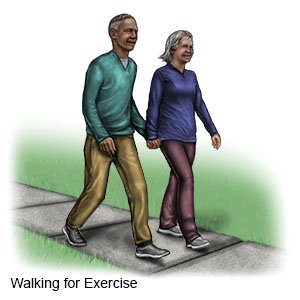Procedures for Compression Fractures of the Spine
Medically reviewed by Drugs.com. Last updated on Aug 4, 2025.
AMBULATORY CARE:
What you need to know about procedures for compression spinal fractures:
Procedures for painful compression fractures caused by osteoporosis are done when other treatments do not work. These procedures can relieve pain and increase movement.
How to prepare for your procedure:
Sometime before your procedure, your healthcare provider will tell you to stop taking certain medicines. These medicines may include aspirin, NSAIDs such as ibuprofen, and blood thinners. You will be told not to eat or drink for 6 hours before your procedure. You will be told to take your regular medicine with sips of water the morning of your procedure. Arrange for someone to drive you home after your procedure.
What happens during your procedure:
- You may be given anesthesia that may keep you awake, relaxed, and pain-free. You will only feel pressure. You may, instead, be given anesthesia to keep you asleep and pain-free. You may also receive numbing medicine in your back near the fracture. A small incision is made on your back.
- Your healthcare provider will use medical cement to bond the pieces of your broken vertebrae. During vertebroplasty a type of x-ray is used to guide healthcare providers to the area that medical cement is injected. Kyphoplasty uses a type of x-ray to help providers guide a balloon into the area. The balloon is inflated and removed. Medical cement is injected into the space made by the balloon.
- An x-ray or CT scan will be done to check the placement of the cement. The incision will be covered with a bandage. Your healthcare provider will wait for the cement to harden before moving you off the procedure table.
What happens after your procedure:
Healthcare providers will monitor for increased pain and weakness. You may be able to go home after your procedure, or you may need to stay in the hospital overnight. You may have discomfort for up to 3 days after your procedure. You will be able to do most of your regular daily activities at home. You will not be able to do heavy lifting for about 6 weeks.
Risks:
Medical cement may leak into your spinal canal. The cement may harden and compress your spinal cord. If this happens, you will need surgery right away. A blood clot in your lungs may form because of the leaked cement. You may get an infection. You may bleed more than expected. Other vertebrae near the cement may break.
Call your local emergency number (911 in the US) if:
- You have severe chest pain or sudden shortness of breath.
- You have severe pain, numbness, and tingling in your arms or legs.
- You lose control of your bladder or bowels.
Call your doctor if:
- You have a fever higher than 101°F (38°C) or chills.
- Your surgery site is red or has drainage coming out of it.
- Your pain or movement does not get better.
- You have a headache that gets worse when you stand.
- You have questions or concerns about your condition or care.
Medicine:
- Prescription pain medicine may be given. Ask your healthcare provider how to take this medicine safely. Some prescription pain medicines contain acetaminophen. Do not take other medicines that contain acetaminophen without talking to your healthcare provider. Too much acetaminophen may cause liver damage. Prescription pain medicine may cause constipation. Ask your healthcare provider how to prevent or treat constipation.
- Take your medicine as directed. Contact your healthcare provider if you think your medicine is not helping or if you have side effects. Tell your provider if you are allergic to any medicine. Keep a list of the medicines, vitamins, and herbs you take. Include the amounts, and when and why you take them. Bring the list or the pill bottles to follow-up visits. Carry your medicine list with you in case of an emergency.
Bandage:
Do not remove the bandage until your healthcare provider says it is okay. He or she may tell to remove the bandage 24 to 48 hours after your procedure. Do not soak in a bathtub, pool, or hot tub.
Activity:
- Do not lift more than 10 pounds for the first few weeks after your procedure. Your healthcare provider may tell not to lift more than 20 pounds from week 6 to week 12.
- Avoid bending, twisting, pushing, pulling, and stretching.
- Do low-impact physical exercise. Walk to stay active and strengthen back muscles. Walks can prevent problems such as pneumonia. Increase the distance of your walk slowly.

- Do not sit for more than 30 minutes at a time.
- Do not drive until your healthcare provider says it is okay.
Follow up with your healthcare provider or orthopedic doctor as directed:
Your follow-up will happen 7 to 14 days after your procedure. Your doctor may have you start physical therapy after your follow-up visit. Write down your questions so you remember to ask them during your visits.
© Copyright Merative 2025 Information is for End User's use only and may not be sold, redistributed or otherwise used for commercial purposes.
The above information is an educational aid only. It is not intended as medical advice for individual conditions or treatments. Talk to your doctor, nurse or pharmacist before following any medical regimen to see if it is safe and effective for you.
Further information
Always consult your healthcare provider to ensure the information displayed on this page applies to your personal circumstances.
